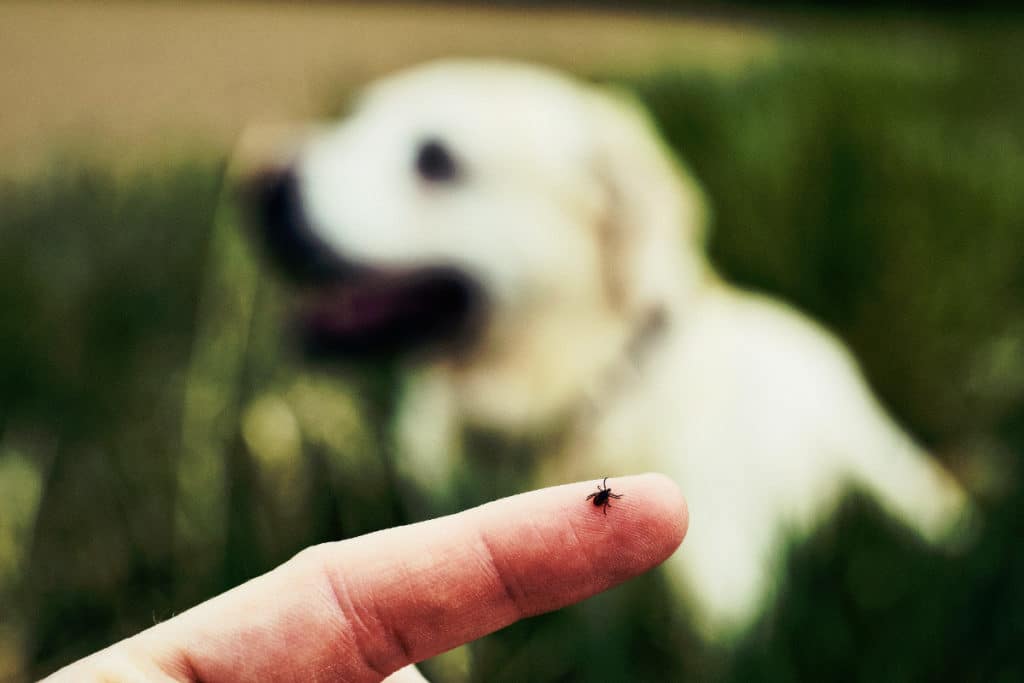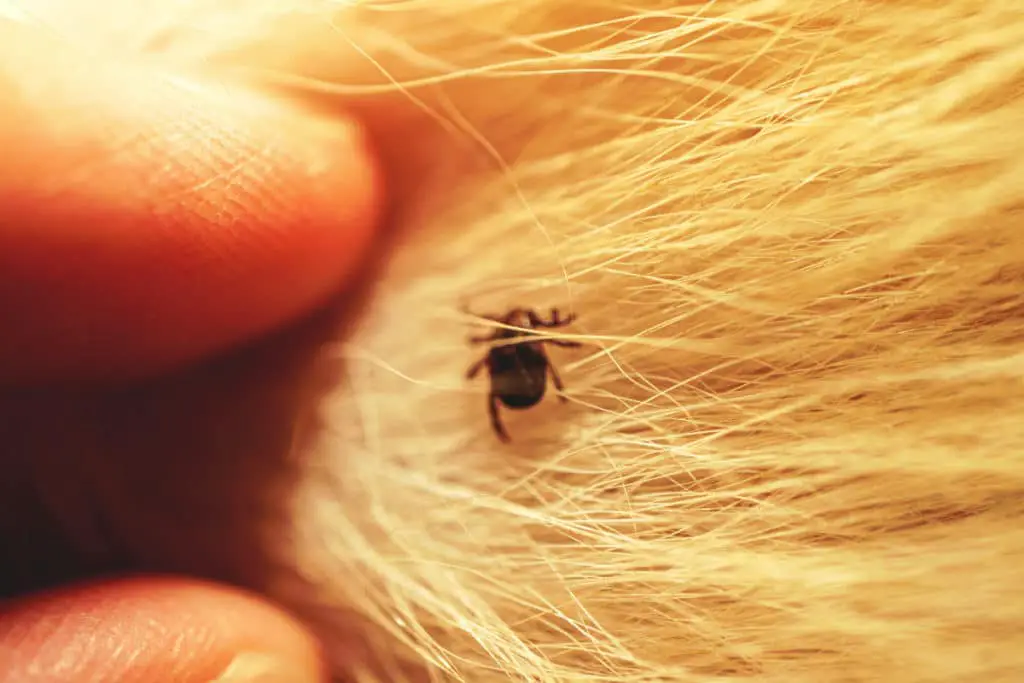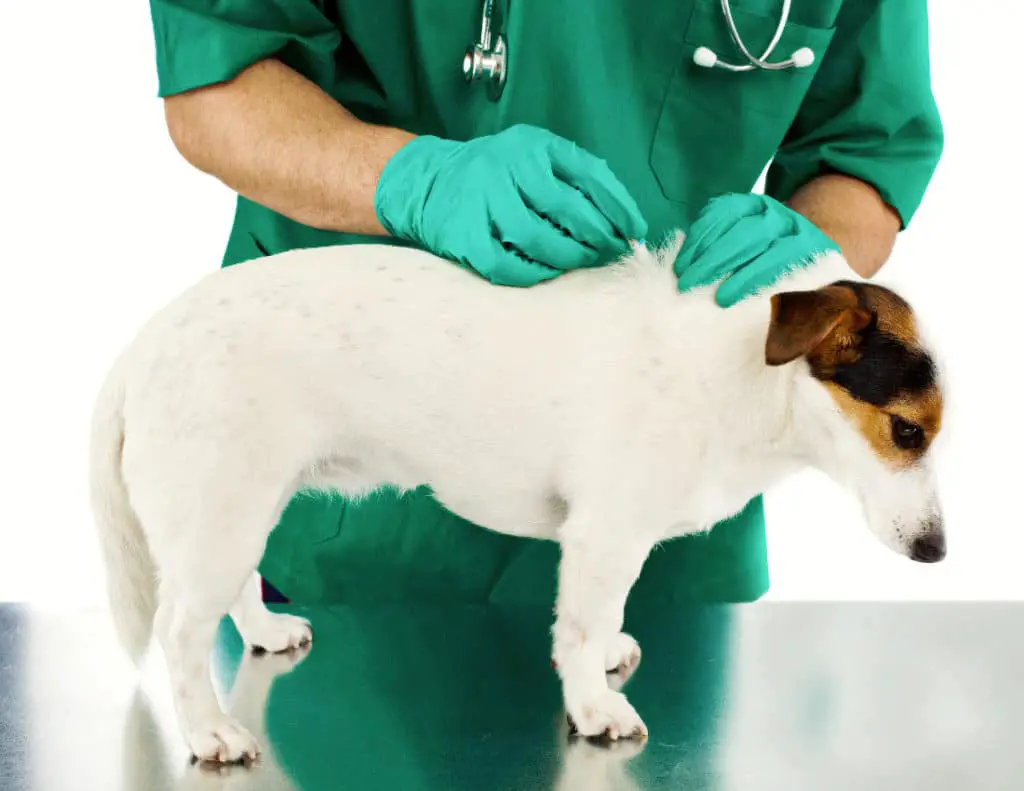If you have a doggo at home, then you might have seen ticks on your dog’s coat (hair). This is because ticks use dogs more commonly as hosts than humans. Some people think that ticks don’t affect dogs, but that’s a common misconception. Dogs do have a lot of effects from ticks. So, if you are a dog parent, it’s better to know about tick fever in dogs and everything related to it. These are the most common tick-related diseases that can affect your doggo.
Table of Contents
Lyme Disease
This is a bacterial infection that can spread mostly through deer tick bites. This can affect not just dogs but also other mammals, birds, and even humans.
- Symptoms
The most usual symptom of Lyme disease is being weak. Your doggo won’t be very active if they have been infected by this bacteria. Also, this infection might cause a fever. Your doggo may also have joint swelling, neurological effects, and kidney damage due to Lyme disease. So, observe if your doggo shows an increase in thirst and an increase in urination. Being slow in doing activities and stiffness are also symptoms you can observe in this situation.
- Detection and Treatment
Your doggo would start showing the above symptoms 2 – 5 months after it got infected by the bacteria. Even if your doggo is not showing any observable signs, you can do an in-house test like 4dx to screen for Lyme disease. This test can also screen for heartworm, Anaplasma, and Ehrlichia. You can learn more about heartworm because it can be life-threatening if not treated early.
There are additional diagnostic tests for Lyme disease like additional blood work and urine samples.
Keep in mind that Lyme disease is treatable, but eliminating the bacteria completely from your doggo’s body can be difficult. The basic treatment is a 4 week long antibiotic course to clear out the bacteria. Although, if this treatment is unsuccessful, the bacteria can do lifelong damage to your dog’s body and may lead to more and more symptoms.
- Preventing the Disease
The basic step is to prevent the tick from spreading the disease to your doggo. This is where high-quality tick and flea prevention comes in handy. You should choose a product that kills ticks quickly. But keep in mind that even with tick-killing products, some ticks may still attach to your doggo. Therefore, it’s a good habit for you to check your doggo’s hair coat thoroughly on a daily basis and physically remove any ticks that you may find.
Also, you can’t get Lyme disease from your dog. This disease can’t be directly spread to you from your dog. But your dog may bring other ticks to the household, and that gives the ticks a chance to crawl onto you. And that can create a risk of you getting Lyme disease from the tick.

Anaplasmosis
Anaplasmosis is a rickettsial disease that can mainly spread through the bite of the lone star tick.
- Symptoms
The most common symptoms of Anaplasmosis are neck paining, bruising of gums and belly, lameness, and inactiveness. Most doggos might not show any symptoms, and some dogs might show some symptoms for 1 to 7 days. The most common sign you should observe as a dog parent should be stiffness of joints and sudden inactiveness of your doggo.
- Detection and Treatment
Symptoms might be the only means of diagnosing the disease. Also, 4dx tests and blood work are used to get a more accurate diagnosis. If this is caught in an early stage, the infection’s prognosis would be good.
The most practiced treatment is an antibiotic course. Most pets clear the infection without any treatment and without any extended effects. But doing an annual 4dx test afterward can come in handy because it can indicate exposure to other active diseases.
- Preventing the Disease
There is no vaccine for this disease. So the best way to prevent your doggo from getting this disease is by preventing ticks from getting attached to your dog.

Canine Granulocytic Ehrlichiosis
Ehrlichiosis disease is mainly spread through lone star tick bites like Anaplasmosis.
- Symptoms
Severe symptoms include loss of appetite, fever, enlarged lymph nodes (swelling in the lymphatic system), bleeding, and inactiveness. Long-term symptoms include weight loss, weakness of the body, and swelling of the joints. Your doggo might starts to show severe symptoms 1 to 3 weeks after being infected by the bacteria. Although, long-term symptoms might take months to a year to show. In some cases, dogs might never show symptoms at all.
- Detection and Treatment
The presence of symptoms is the main way to diagnose this disease. But doing a blood test and 4dx test can give a more accurate result. If this disease is caught early, then it can be treatable. If it’s caught in a later stage, it can be life-threatening or can cause more infection even after treatment.
Treatment for Ehrlichiosis is similar to Lyme disease. Most pets clear the infection without any treatment and without any real side effects. Although, a later annual 4dx test might show positive results for this disease, which says that your doggo is exposed to the disease. But the disease might not be necessarily active. Therefore, it’s better to keep an eye out for the physical symptoms.
- Preventing the Disease
Sadly, there is no vaccine to prevent this disease. The best thing you can do is to prevent ticks from coming to your household and onto your doggo.

How to Prevent Ticks from getting to your Dog
As mentioned above, the best way to prevent your doggo from getting these diseases is to prevent ticks from coming into your house. So you can do the below things for that.
- Do regular tick checks after your doggo spends time outside, especially during warmer months.
- Use products such as Bravecto and Activyl to prevent ticks from coming to your household.
- Test your dog annually with the in-house 4dx test.
You can also watch this video about the best tick prevention tips and products.
What to do if you find a tick on your Dog?
If you find a tick on your dog, then use tweezers to remove that tick. And use a tick prevention product after consulting with your vet because if you find one tick on your dog, then most probably there are more ticks on your dog. For more information you can read this article on tick removal and prevention.

